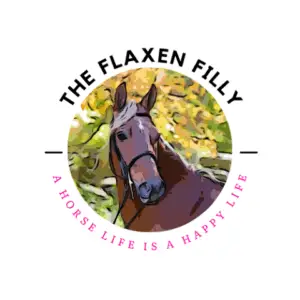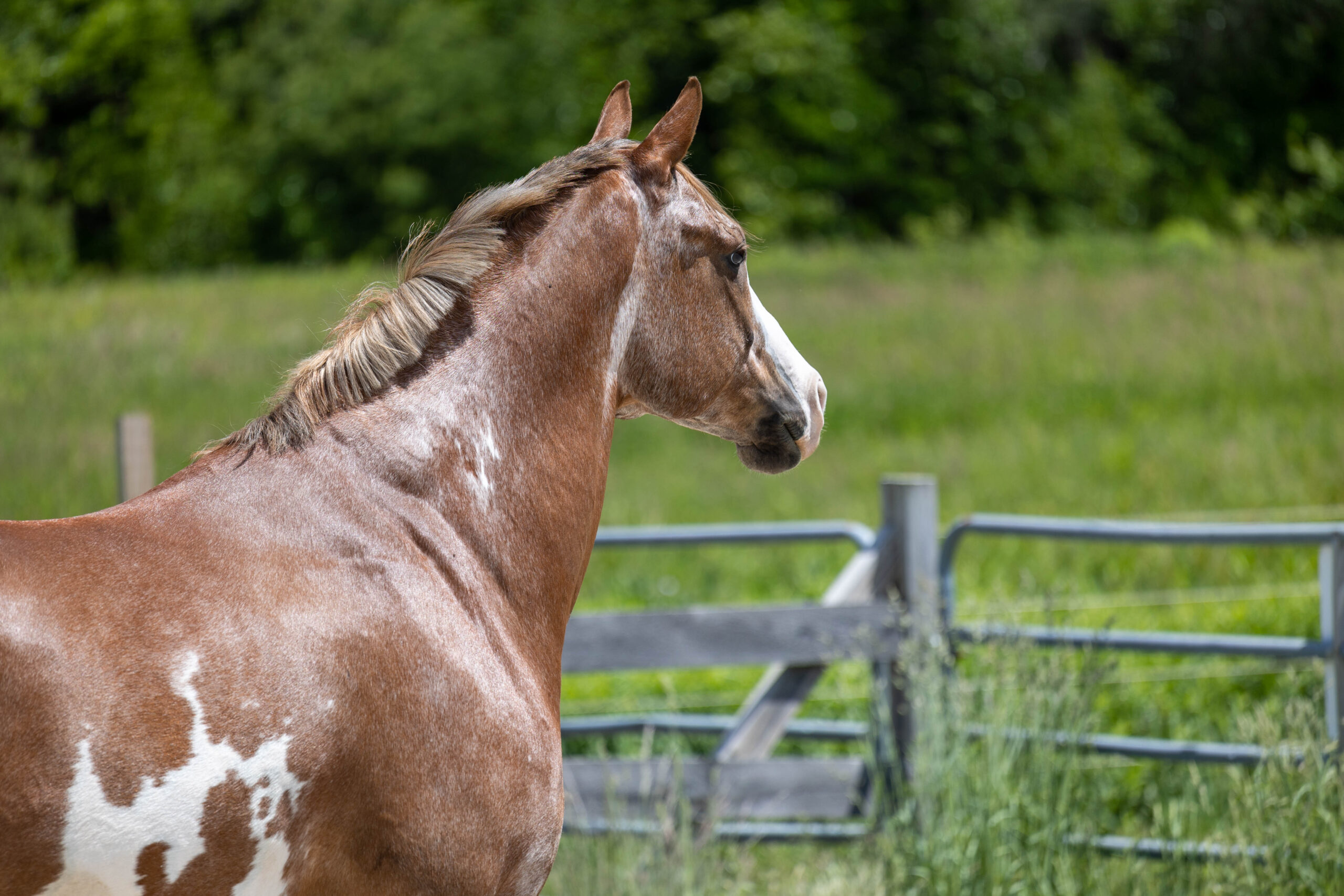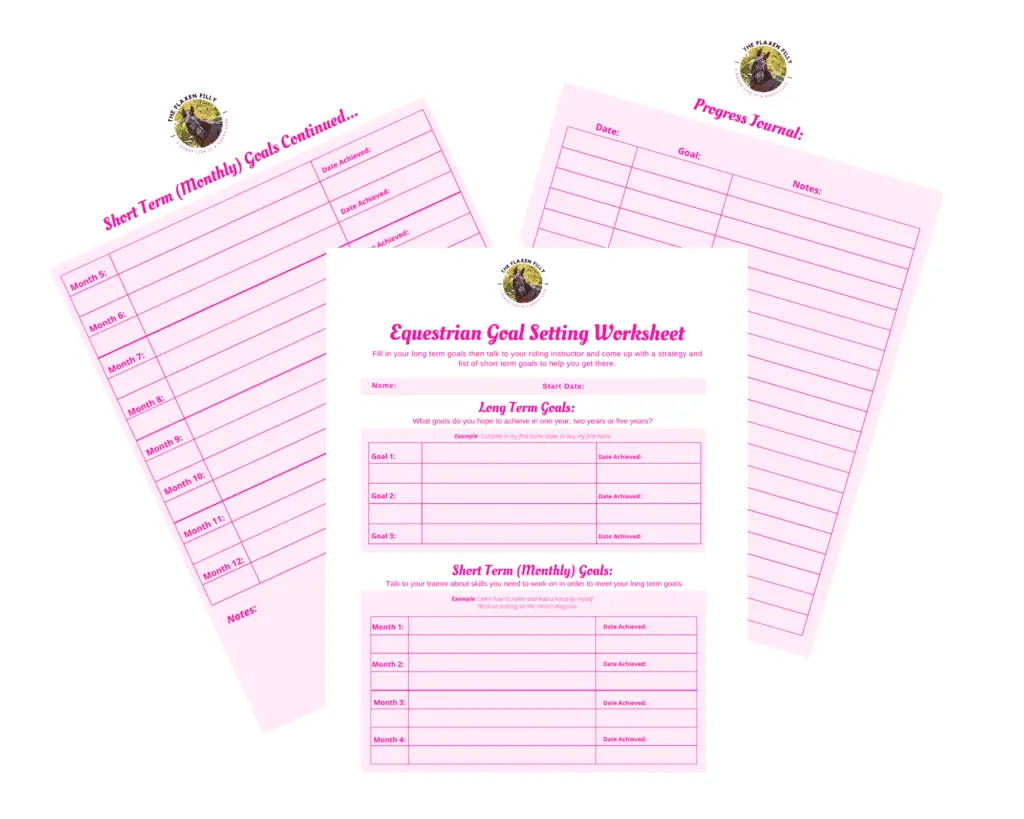So, you bought your first horse, congratulations! Now what? Bringing your new horse home can be a bit overwhelming for you and your new horse. In this article we’ll review 10 ways to make the transition as seamless as possible for both of you. While there may be some bumps in the road no matter how well you prepare, we’ll also discuss how to handle them.
This post may contain affiliate links which means that I may earn a small commission at no extra cost to you. As an Amazon Associate I earn from qualifying purchases.
Preparing The Farm For Arrival
Before your new horse arrives you’ll need to prepare his stall and turnout space. If your horse is moving into a stall that was previously used by another horse you’ll want to strip it out and thoroughly disinfect it. While the stall is empty and before you add new bedding into the stall, check for any objects your new horse could get hurt on. If there are any broken boards, loose eye hooks or any other possible dangers, fix them before your horse arrives. This is also a good time to remove cob webs from the corners or bars and remove any existing buckets.
Once you’ve cleaned and removed everything in the stall you’re ready to add brand new fresh bedding. Then it’s time to either disinfect all of the buckets or hang up brand new ones. Read my complete guide to cleaning water buckets (and feed dishes) out the right way for the full process I use and supplies you’ll need.
Now that the stall is cleaned and ready, do not put any feed or hay in the stall. If your horse will be arriving the same day you can fill up the water buckets with fresh water. If you are preparing the stall in advance you may want to wait until the day of arrival to add water so it stays clean.
Feed And Supplements
It’s important to find out from the seller exactly what your new horse is currently eating including the brand and quantity of grain, supplements and type and amount of hay. The seller should send some of the horse’s feed with him, you’ll want to make sure to discuss this prior to the day your horse arrives.
Even if you plan to switch the horse’s feed it’s important to get some of their current food to give them for the first few days. Switching grain without a slow transition can make your horse sick and the stress of moving could make the risk even greater. Once the horse has settled in after a few days, you can begin switching the feed over little by little.
In addition to feed you will need to find out what supplements your horse is currently on and be sure to purchase some. Some supplements may not be necessary to continue but others may be crucial for your horse. Certain medications need to be cut down slowly and cannot be stopped abruptly. Depending on what the horse needs for supplements and medications, you may need to check with your vet if you plan to make changes.
Prepare The Turnout Area
Now that your stall is ready and you’ve made arrangements for the horse’s feed, it’s time to prepare the turnout area. Walk the fence line of the turnout and check for any broken boards, electric lines that are down, nails, rocks sharp objects or anything else that could cause your horse to become injured. Check and make sure the gate latches appropriately and that there is an adequate water source in the turnout area.
Check with your barn manager or barn owner to confirm how much turnout they provide to the horses during the day and under what conditions. For example, if your horse is feeling anxious when he arrives and starts running too much in the paddock, will they turn him in to let him relax in his stall? Do they turn the horses out at night time in the summer to avoid the heat? Do the horses go outside in all weather conditions or stay in when it’s raining? If your barn manager is hands off you’ll need to make yourself available to monitor your new horse as he settles in.
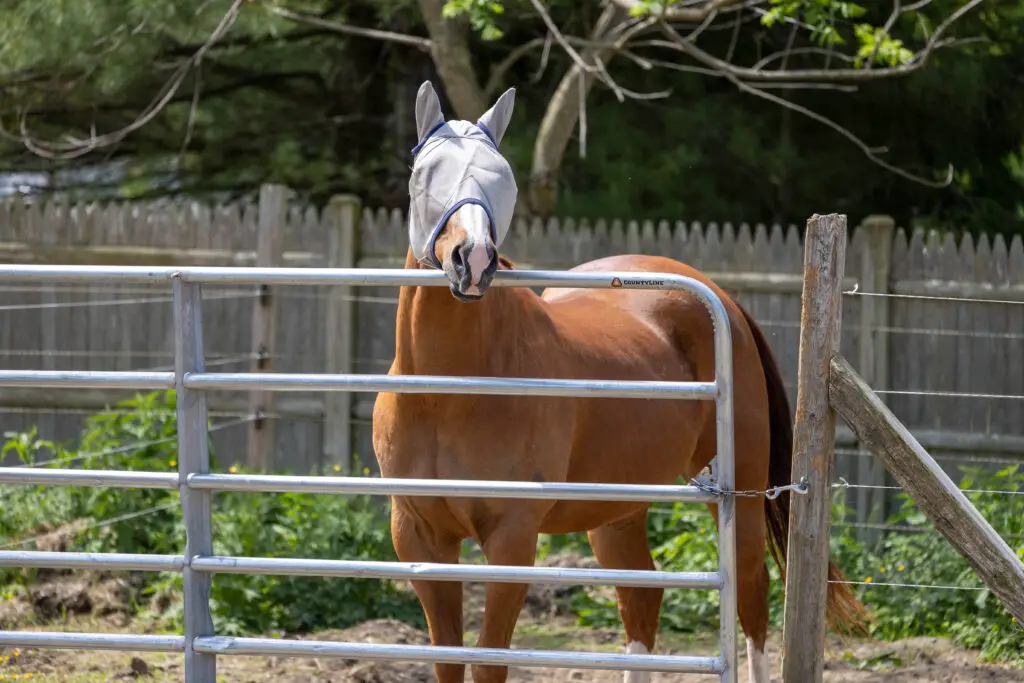
Quarantine Your New Horse
It may be tempting to let your horse start socializing when he arrives to the farm, especially if he hasn’t traveled much and is calling to his friends. But, you need to resist the urge to allow your horse to touch noses with other horses.
At our farm we quarantine every horse for a minimum of two weeks when they arrive at the farm, no matter what. If your horse travels for shows or has never left the property but was exposed to other horses at the prior farm, or traveled a long distance, it can take time for symptoms of a contagious illness to surface.
During the first couple of weeks, monitor your horse for any signs of illness including runny nose, coughing, colic, or any other ailment. If your horse has any symptoms of infection, call your veterinarian and do not expose your horse to other horses. Your vet may recommend that you quarantine your horse for 30 days upon arrival.
This doesn’t mean that you can’t ride or enter common areas. It just means you cannot turn your horse out in a pasture with other horses or let him come into direct contact with another horse.
This also protects your new horse since stress can weaken the immune system and your horse may be more susceptible to contracting an illness from another horse already residing at the farm.
Behavioral Changes To Expect
Depending on your new horse’s background, moving to a new farm and getting to know his new humans may be very stressful and overwhelming. For some horses, it may be no big deal. You should expect your horse to be on edge for a little while after arriving at the new farm. Sometimes this phase lasts a couple of days, sometimes one day or in other situations it could last a couple of weeks.
Your horse while he may be generally calm and well behaved, might be on high alert, anxious and spooky. It’s important to remember no matter how well behaved the horse is, you don’t know each other yet and he might be easily triggered due to stress. So you should handle him carefully and don’t cut any corners. Follow the basic safety rules for handling horses to avoid an accident. For example, wear the appropriate footwear in the barn, don’t walk behind your new horse and use a lead rope when leading him around.
To Ride Or Not To Ride
You’re probably excited and anxious to get right to work with your new horse and start enjoying him. In some cases it may be fine to hop on and ride your new horse after he has a chance to look around and take in his new environment. A seasoned show horse that has traveled around a lot for competitions may settle in within a couple of hours and be ready to work.
Other horses may need more time. That’s not to say you can’t ride, but you want to start your relationship off on the right foot. And, one way to do that is to set him up for success. You can lunge your horse, hand walk him and groom him and determine his comfort level.
If you think you’re ready to ride, ask your trainer for their opinion too. Every horse is different, and there is no right answer to whether or not it’s ok to ride the first day you get your new horse. When we travel to horse shows, we ride after we get the stalls set up and the horses get worked the same day we arrive.
Many people prefer to wait a few days before riding.
My mom bought a new horse last year and he had already traveled to shows and is fairly easy going. However, when horses travel to shows they travel with other horses and people they know and they get used to the routine.
In this case our horse arrived from several states away with strange people and horses for company and to a brand new farm. So, he was a little anxious for a couple of days. We chose to lunge and groom him the first day before letting him have some quarantined turnout. The next day we repeated the same process and although I was anxious to ride him I could tell he wasn’t quite ready. So, I rode him on the third day and he was calmer and ready to focus and we had a great ride. We could have gotten through a ride the first day but it would have been very difficult for him to focus. To me, it wasn’t worth it.
Download your FREE Equestrian Goals Worksheet and start achieving your goals today!
Introducing Pasture Mates
Once your horse’s quarantine period is up, you may want to allow him to be turned out with a friend. If you choose to have your horse turned out with other horses start slow and make sure you watch them. Don’t turn your horse out with a group of horses at once as this may lead to an injury.
Try turning your horse out with one other calm horse and assess whether your horse is at the top or the bottom of the totem pole. Once your horse makes a friend, you could introduce another horse into the mix. Horses have a wide ranger of personalities and some horses get along well with others and some don’t. Some horses get along with geldings only or mares only, or can get along with any other horse. It takes time to figure out what is best for your horse, so be patient. Work with your barn manager as they likely know the other horses’ personalities well and can decide on some potential matches that would probably work.
Getting To Know Your New Horse
Developing a strong partnership and successful relationship with your horse is like any other relationship in your life. It takes work. Bottom line, it takes work. No matter how much you love each other, there will be hurdles and you’ll have to find a way to work together.
Even if you get along well, it will take time to really get to know each other. You’ll find out what your horse’s quirks are and what he likes. And, he will learn and get used to the way you ride and handle him or interact with him.
Spend lots of time grooming, grazing, hand walking your new horse. There are lots of ways to bond besides riding. Try not to put too much pressure on your rides until you figure each other out.
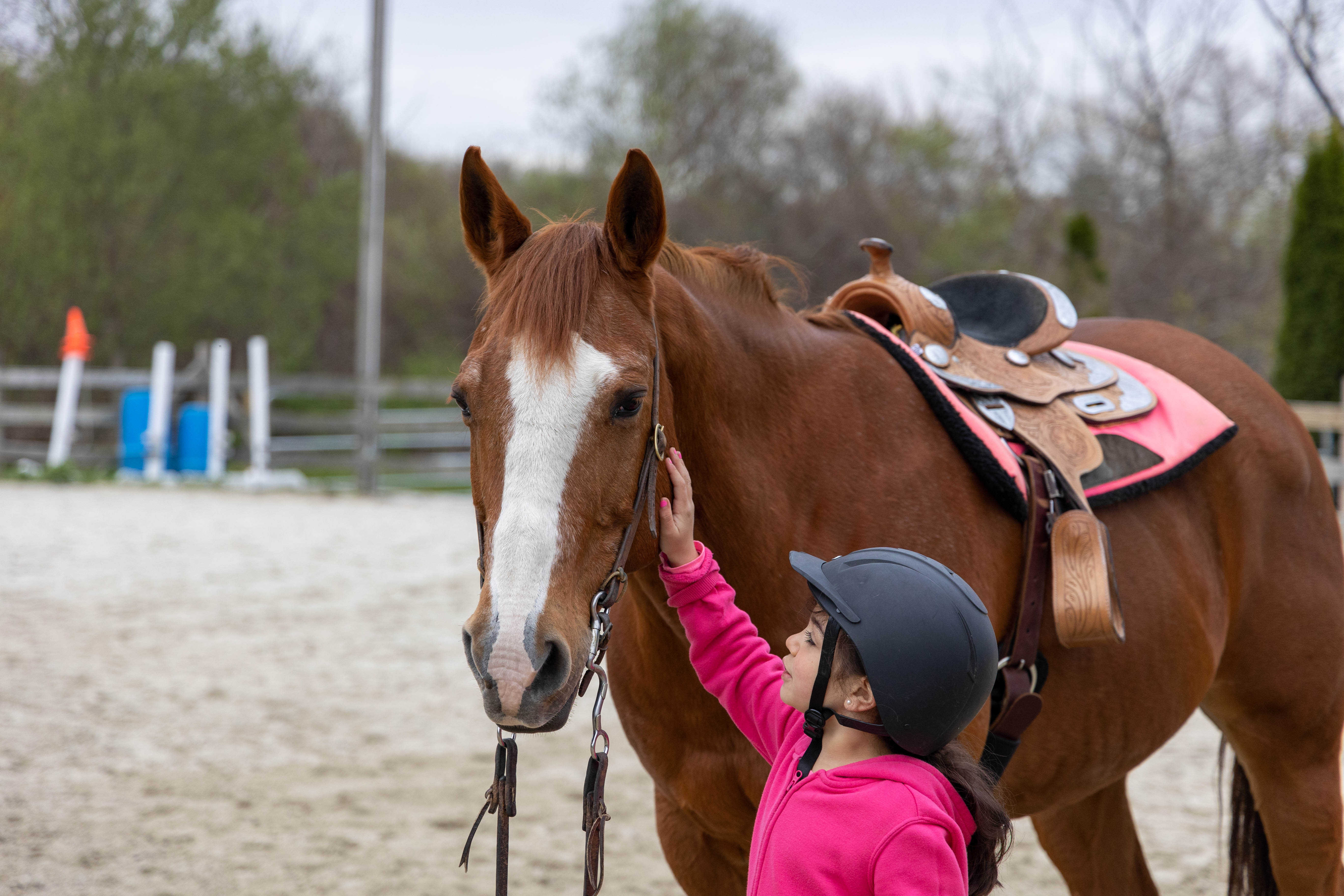
Working With A Trainer
The best way to learn to work together with your new horse is to consistently work with a trainer! I wrote about this in a recent article which describes why all equestrians, regardless of their knowledge and skill need a trainer. Everyone needs a coach on matter how confident and talented they may be.
Having an objective set of eyes on the ground to help you navigate your new relationship will be very helpful. Your trainer has probably worked with countless different personality types when it comes to horses and are a wealth of information and experience. They probably have many thoughts and tricks up their sleeve that you wouldn’t necessarily think of on your own.
Take consistent lessons on your new horse and be receptive to feedback even if it’s not what you want to hear. It will pay off in the long run.
Line Up A Team Of Professionals In Advance
In addition to your trainer, you’ll need a whole team of professionals to support your horse’s care and well-being. This includes a veterinarian, farrier and equine dentist. These professionals are essential to keep your horse happy, healthy, comfortable and to optimize his performance. So, if you don’t already have them lined up, you need to inquire with your farm about adding your horse to the roster with their current providers or start making some phone calls. This all needs to be done before your horse arrives.
Having a skilled and professional vet is crucial. You’ll need to make sure your horse has his vaccines, any chronic issues are being managed closely and a reliable person you can call in the event of an emergency. Because when it comes to horses, it’s not if, but when something will happen.
A farrier is equally important. Without healthy feet your horse cannot do much of anything. His beautiful face and gleaming coat that match his years of professional training won’t get you very far if he’s uncomfortable or his hooves are too long or he’s missing his shoes.
An equine dentist is also essential for making sure your horse can do his job. Horses with dental issues may be in a lot of pain and can be very difficult to ride. Your horse will need to have his teeth floated one to two times per year depending on the health of his mouth. Young horses often need to be checked even more frequently. Some farms use their veterinarian for dental work as well.
Next, you’ll need to consider if you want to set up massage, chiropractic or any other type of care for your horse. This can be done later and does not need to be set up before your horse arrives.
Supplies You’ll Need For Your New Horse
Lastly, the fun part, although, not fun for your budget. Your new horse will need lots of supplies, tack and equipment.
Find out what size blankets and tack your horse currently wears before you go shopping. If the current owner is unsure, ask for measurements. This is a good way to avoid having to return items or sell them in order to buy new ones.
In this article, you will find a complete list of essential items horse owners need to purchase for their new horse. I’ve linked a few examples below but I highly suggest using this article as a checklist.







I hope you found this article helpful! If you did, please share it!
Check out these related articles to help you on your journey to horse ownership!
How To Choose A Boarding Barn For Your Horse
What You Need To Know When Buying Your First Horse
How To Know If You’re Ready To Buy A Horse
6 Reasons You Should Not Buy A Horse
How To Care For Your Horse: Daily Check List
